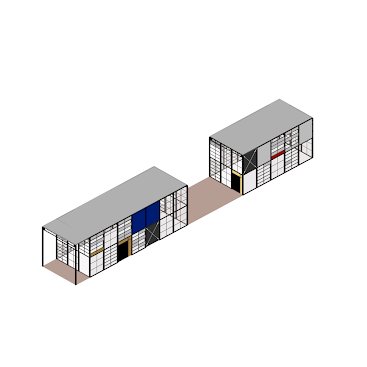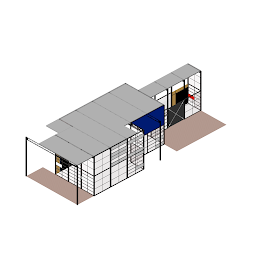Recent Work – Part 2: Pre-thesis
I haven’t yet decided how I want to manage the social-media-blogging component of my thesis process, which will begin in January when I return for my 10th and final semester. In a way I am inclined to be somewhat schizophrenic about it, with different aspects appearing different places. If that’s the logic I follow, it will probably feature major milestones/completions here on this blog, images/fragments/visual ideas on Thetic, my tumblr, and in-depth theoretical discussions in a private circle on Google+ (if you are interested in contributing there, let me know and I’ll add you to the circle.)
However, considering the end of my pre-thesis semester a “substantial completion” of some kind, I’ll post a bit here about the project I am proposing to pursue.
My thesis is an attempt to tie together a number of threads with which I have been preoccupied over the last several years. Some of those threads have already emerged on this blog: the relationship between the digital process and the creative process, Grasshopper as a tool for drawing rather than modeling, composition and generative formmaking (in an anti-blob vein), and morphogenesis more generally.
Here’s the 2-minute pitch:
My thesis stems from a disconnect I perceive between the current state of digitally-enabled architecture and other cultural productions (music, literature, art, television, film, etc). Whereas digital architecture seems to look unflinchingly toward the “new,” with form dictated by the latest available algorithms, the other manifestations of digital culture have a curious, nostalgic relationship with the past and the future, characterized by various observers as atemporality, hauntology, retro-mania, and off-modern.
Moreover, much of contemporary digital architecture seems to have sacrificed certain embedded intelligences that were present in pre-digital methods of working, in the service of forms characterized by complexity, which at best deal with genuine societal complexity only metaphorically.
I propose with my thesis project to develop a new vocabulary of algorithmic techniques and procedures, using pre-digital architecture as source material. These techniques, first developed in the process of analysis and imitation, will then be put to use in the design of an Academy in Los Angeles. The architectural source material will be selected from the Case Study Houses of 1945-66.
It is my hope that in the process of generating new work by combining algorithmic procedures derived from historical precedents, I will produce an architecture which has nostalgic resonance without resorting to post-modern pastiche, and which proves that parametric techniques need not follow a “Parametricist” stylistic regime.
As a first experiment in this process, I attempted a parametric reverse-engineering of Case Study House #8, better known as the Eames House. See some results from that process here: https://plus.google.com/photos/112558481121248068712/albums/5686851698427814193?authkey=COGfhNHR1dTe-QE
Some of these results quite clearly resemble the original Eames House:

Whereas others are clear deviations, suggestive of rather different formal+spatial qualities, but nevertheless retaining a certain capacity to evoke the source material.




My intention is to produce a number of such generative analyses, which will in turn be decomposed and recombined in service of the particular design project discussed above. It is in this process — the recombination and application of these generative procedures — where I insist that non-deterministic, non-procedural, non-parametric processes must be introduced in order to engage with human creativity by offering an opening for reinterpretation, lateral thinking, and intuitive leaps. I firmly believe that only by making an allowance for this can a digitally-driven design process ever approach the effectiveness of pre-digital design methods in responding to the contingencies of program, site, and culture.
Ultimately, I am setting out to address a set of questions about architecture, computation, the design process, and culture:
1. What would a digitally-driven architecture look like if it eschewed computationally simple, pre-packaged algorithms in favor of procedures derived from architecture itself?
2. Can architectural design achieve greater accessibility and cultural relevance by participating in the kinds of historical mining/imitating that pervade other modes of cultural production?
3. What should be the relationship between automated, ultimately deterministic generative processes, and human creativity in design?
As my thesis proceeds, in response to advisors, critics, and the necessary ups and downs inherent in the design process, I will continue to post updates here and in the other forums mentioned at the beginning of this post. I welcome your feedback, criticism, and participation in this investigation!
Filed under: Architecture, Grasshopper | Leave a Comment
No Responses Yet to “Recent Work – Part 2: Pre-thesis”